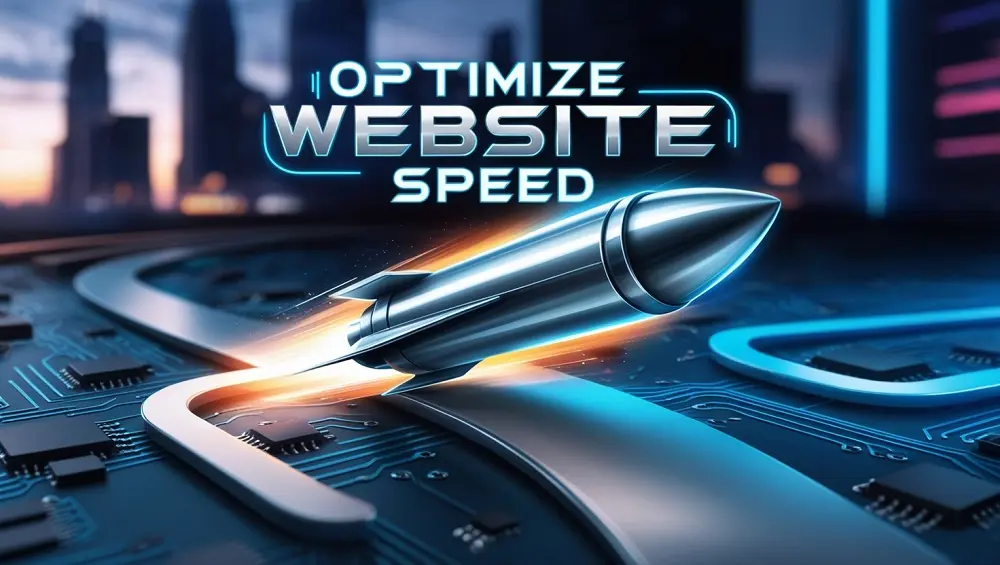
Website speed is a critical factor in delivering a great user experience, improving search engine rankings, and increasing conversion rates. In today’s fast-paced digital world, users expect websites to load quickly, and even a slight delay can result in lost visitors and revenue. This article provides actionable tips on how to optimize your website for speed.
1. Optimize Images
Large images are one of the main culprits of slow-loading websites. To optimize images:
- Compress images: Use tools like TinyPNG or ImageOptim to reduce file size without sacrificing quality.
- Choose the right format: Use JPEG for photographs, PNG for transparent backgrounds, and WebP for modern browsers.
- Use responsive images: Ensure your images adapt to different screen sizes by using the
srcsetattribute.
2. Minimize HTTP Requests
Each element on your webpage, such as images, scripts, and stylesheets, requires an HTTP request. Minimizing these requests can significantly speed up your site:
- Combine files: Merge CSS and JavaScript files to reduce the number of requests.
- Use CSS sprites: Combine multiple images into a single image and use CSS to display the parts you need.
- Reduce plugins: Limit the use of plugins, especially those that add multiple scripts and styles.
3. Enable Browser Caching
Browser caching stores static files on the user's device, so they don’t need to be reloaded every time the user visits your site. To enable caching:
- Set expiration headers: Configure your server to tell browsers how long they should cache your resources.
- Use a caching plugin: For WordPress sites, plugins like W3 Total Cache or WP Super Cache can automate this process.
4. Implement a Content Delivery Network (CDN)
A CDN stores copies of your website on servers around the world, delivering content from the server closest to the user. This reduces latency and speeds up load times:
- Choose a reputable CDN: Services like Cloudflare, Akamai, or Amazon CloudFront can improve your website’s performance.
- Distribute heavy content: Use the CDN to serve large files, such as images, videos, and scripts.
5. Minify CSS, JavaScript, and HTML
Minifying involves removing unnecessary characters, spaces, and comments from your code to reduce file size. Tools like UglifyJS for JavaScript, CSSNano for CSS, and HTMLMinifier for HTML can automate this process.
6. Use Asynchronous Loading for JavaScript
Loading JavaScript files asynchronously allows other elements of the page to load simultaneously, reducing overall load time:
- Add the
asyncordeferattribute: Modify your script tags to includeasyncordeferto improve loading speed.
7. Optimize Server Response Time
A slow server can bottleneck your website’s performance. To improve server response time:
- Choose a reliable hosting provider: Ensure your web host offers fast servers and good uptime.
- Upgrade your server resources: Consider moving to a dedicated server or a virtual private server (VPS) if you experience high traffic.
8. Enable Gzip Compression
Gzip compression reduces the size of your website’s files before sending them to the browser, speeding up load times:
- Enable Gzip on your server: Configure your server to compress files using Gzip. Most modern servers support this feature.
9. Reduce Redirects
Each redirect adds additional HTTP requests, increasing load time. To minimize redirects:
- Audit your website: Use tools like Screaming Frog to identify and remove unnecessary redirects.
- Use direct links: Update internal links to point directly to the final URL without intermediate redirects.
10. Monitor and Test Performance
Regularly monitoring your website’s performance helps you identify and address speed issues:
- Use performance testing tools: Tools like Google PageSpeed Insights, GTmetrix, and Pingdom provide detailed insights and recommendations.
- Analyze and improve: Continuously analyze your website’s speed and implement improvements as needed.
Conclusion
Optimizing your website for speed is essential for providing a superior user experience, boosting SEO rankings, and increasing conversions. By following these tips, you can ensure your website loads quickly and efficiently, keeping your users satisfied and engaged. Start implementing these strategies today and watch your website performance soar.